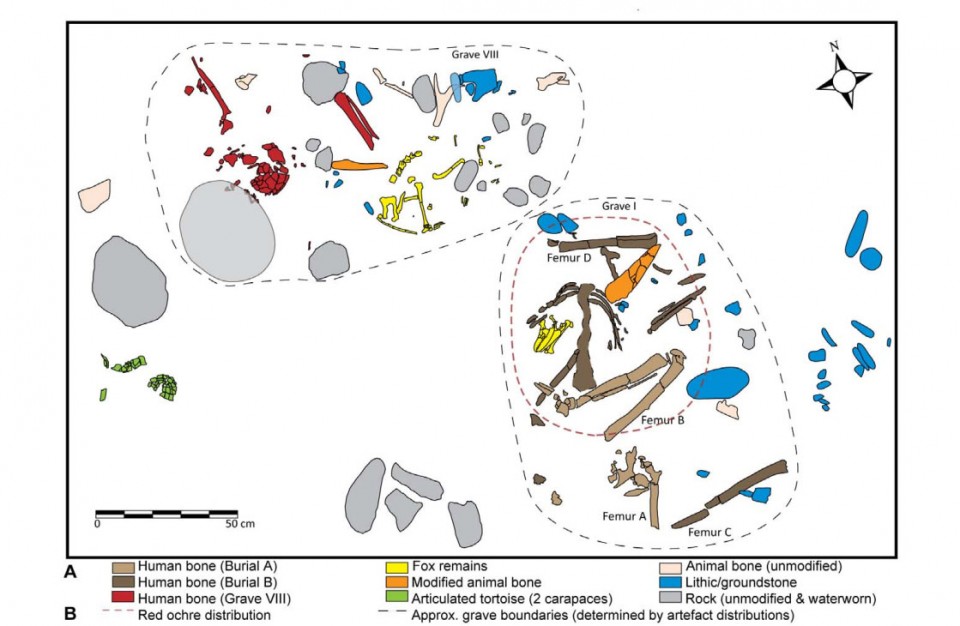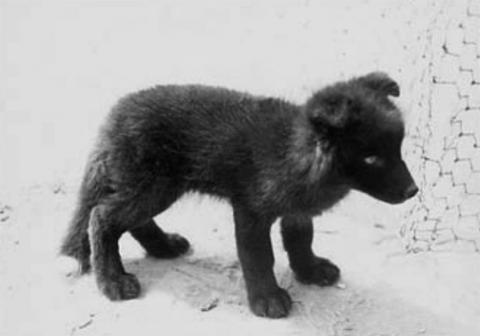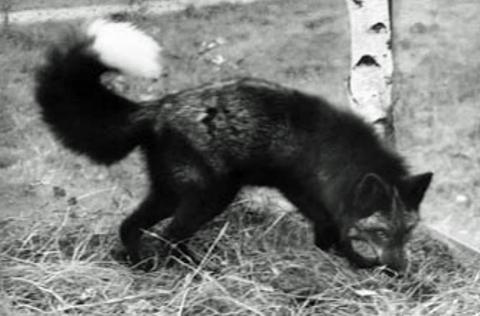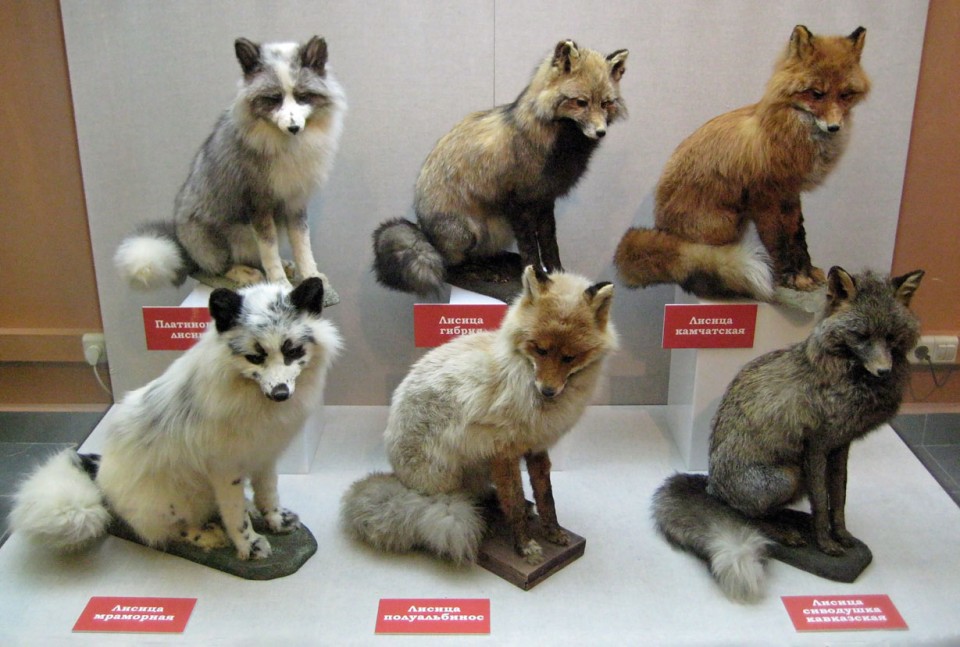Red Fox Interaction with Humans - Fox Domestication
While it is true to say that many people see the Red fox as "vermin" to be controlled or eradicated, equally as many (if not more) see it as a beautiful animal that typifies all that is considered wild. A select few of these people have wanted a fox as a pet. Unfortunately, what I shall refer to as “un-tamed foxes” (i.e. those rescued, or taken from the wild as cubs and raised as adults) typically do not make good pets – the cubs can be very destructive and foxes have an odour all their own, which can be difficult to deal with. The result is that many who try raising foxes rapidly find themselves out of their depth and this can result in the animal being abandoned.
Caroline Gould, who runs Vale Wildlife (a wildlife rescue centre in Gloucestershire), tells me she found a fox wearing a collar walking around a local park "looking lost" several years ago. Consequently, I cannot advocate any attempt to keep an untamed fox as a pet (see foxes as pets QA). The problems associated with raising a fox have not, however, put some off trying.
Wallen, in his book Fox, noted that attempts were made to domesticate (presumably Fennec) foxes during the dynasties of the Old Kingdom of Egypt (2700 – 2159 BC); it is believed that the aim was to keep the foxes as a source of meat and fur. Wallen pointed out, however, that most attempts to domesticate foxes have failed, although he noted that some hunts have kept ‘pet’ foxes and he printed a photo of a fox chained to the bumper of a car in rural Minnesota circa 1940. In fact, recent archaeological evidence from the Middle East (northern Jordan) found at least two graves, dating back some 16,500 years, where foxes appear to have been buried with humans. In a recent paper to the journal PLoS One, a team of archaeologists fronted by Lisa Maher at Cambridge University speculate that the placement of the fox remains within one particular grave indicates that the fox was a companion animal to, rather than an adornment of, the person buried there. The researchers concluded that:
“Although we may never be able to reconstruct the nature of the relationships between humans and early domesticated dogs (were they pets or work animals, or both?), their inclusion in burials reveals ties of emotional consequence. It is possible that the burial of a fox with a human might have had the same social, ideological or symbolic significance as that of a human with a dog.”

Whatever happened in these early civilisations, it wasn’t until the mid 20th Century that we saw the first scientifically controlled attempt to domesticate the Red fox – this came in the form of the ‘Fox Farm Experiment’. The experiment, the goal of which was initially shrouded in secrecy owing to restrictions on the study of Mendelian inheritance at the time, has provided a fascinating insight into how physical and behavioural traits are linked, and provides a fantastic example of how artificial selection operates. I will only summarise the situation here, but those interested in learning more are directed to a fascinating overview by Lyudmila Trut published in the March-April 1999 issue of American Scientist and, more recently, the article by Evan Ratliff in the March 2011 issue of National Geographic.
In 1958, Institute of Cytology and Genetics (part of the Siberian Department of the Russian Academy of Science) biologist Dmitry Belyaev and his graduate student Lyudmila Trut started scouring fur farms in the (now former) Soviet Union looking for silver foxes -- a colour variant of the Red fox -- to use in their experiment. Belyaev and Trut selected foxes that showed the least fearful and aggressive response to humans for their experiment and, in all, the researchers collected 130 animals (100 vixens and 30 dogs), most from a farm in Estonia. Recent molecular data has traced the origins of these foxes to one of the earliest fur farms (established in the 1890s) on Prince Edward Island in south-eastern Canada, which caught many wild foxes locally for farming. In 1959 the researchers began selectively breeding them for sociable traits – in other words, they bred only the most sociable (i.e. friendliest) animals in each litter.

When the cubs reached sexual maturity (at 7-8 months) they were scored on their tameness: Class III foxes fled or tried to bite when touched; Class II foxes let themselves be stroked and handled but showed no emotionally friendly response to humans; while Class I foxes were friendly to humans, wagging tails and whining. In the fourth generation (1964) cubs were born that didn’t show any aggression towards humans and some cubs would also wag their tails.
By the sixth generation, the researchers had to add a fourth class (Class IE or ‘domesticated elite’) to account for foxes that were eager to establish human contact by one month old, whimpering to attract attention and sniffing and licking the humans like dogs – some would even jump into the arms of their keepers and lick their faces. In the sixth generation just fewer than 2% of cubs were Class IE; this had risen to 18% by the 10th generation, 35% in the 20th generation and, by the late 1990s/early 2000s 70% or more of cubs fell into Class IE. In short, not only had the geneticists created foxes that weren’t afraid of humans, but they actively wanted to bond with people.
As the experiments continued the researchers witnessed an explosion of changes in external appearance and, by the 1980s, not only were they seeing a change in the foxes’ temperament and sociability, they were also seeing changes in their appearance. Indeed, one of the first traits they saw emerge was a change in the coat colour; cubs started appearing with white (pigment-less) patches on their fur. Genetic work revealed this ‘piebalding’ (which is common in domesticated animals) was caused by a mutated copy of the Star gene. Coat colour was, however, only one of several traits that began appearing.

Back in 1866, in his book The Variation of Animals and Plants under Domestication, Charles Darwin described how domesticated animals tended to share a set of common characteristics that make them appear juvenile: they’re smaller in size, have less rigid (i.e. ‘floppier’) ears and curlier tails than their non-domesticated progenitors. This is a phenomenon known as paedomorphism (a type of neoteny) and it was precisely this that the Russian biologists were seeing on their farm after only nine generations. They were also seeing a widening of the skull and shortening of the snout – as Alexandra Horowitz put it, in her 2010 book Inside of a Dog, the foxes are “improbably cute”.
So, in selecting for only a single trait (i.e. a calmer temperament), the biologists were seeing the incidental development of a suite of other puppy-like features, suggesting that the traits are genetically linked. Indeed, DNA analysis of some of the farmed animals is showing that domestication is a complex phenotype (i.e. is the result of a suite of genes, rather than a single gene), with the farmed foxes differing from un-tamed animals by 40 genes.
The finding that many of the features we associate with domestic dogs may have arisen purely as a result of selecting for friendly animals was striking in itself, but the researchers wanted to know how much of a fox’s temperament was ‘hard-wired’ – i.e. how much was nature and how much nurture. The results were surprising. In a separate building on the same farm, the researchers were also breeding foxes, but this time they were selecting for aggressive traits, resulting in a collection of foxes that were highly aggressive towards people approaching their cages. When the researchers removed a cub born to an aggressive vixen and placed it with a tame vixen, the result was still an aggressive adult. This suggests that aggression in foxes may be more a result of their genes than the kind of up-bringing they experience. Why should this be?
Research into the hormone profiles of the farmed foxes has shown that they have altered levels of three key hormones in their brains: serotonin (reduces aggression); noradrenalin (a stress hormone); and dopamine (involved in stress regulation and sociability). Farmed foxes have higher levels of serotonin in their brains than non-domesticated ones, while levels of noradrenalin and dopamine rise later in development, causing a delay in the fear response. Indeed, the researchers found that the fear response develops in dogs at eight-to-12 weeks old (depending on breed), while in un-tamed fox cubs it appears after only six weeks – in domesticated fox cubs, however, there was no sign of the fear response even after nine weeks. It seems that in un-tamed foxes there is a rise in stress hormones between two-and-four months old, reaching a peak around sexual maturity (eight months); in domesticated foxes this rise is delayed by several weeks.

The biologists suggest that this -- coupled with the fact that, on average, domesticated fox cubs start responding to sounds two days earlier than non-domesticated ones, and open their eyes a day earlier -- provides a longer ‘window’ during which the cubs can bond with their carer.
Another striking finding from the fox domestication experiments comes from preliminary behavioural experiments conducted by Brian Hare at Duke University in North Carolina. Hare studied the ability of the farmed foxes to act on social cues from humans. As most dog owners will be only too aware, domestic dogs have a superb ability to respond to our moods and have evolved the ability to follow pointing and eye movements to objects (something that human babies don’t get until about a year old). Hare found that tamed fox cubs were as good at following human points and eye movements as puppies of the same age.
In other words, the researchers set out with the goal of breeding a tame fox, but by selecting only for this trait they ended up with what is, for all intents and purposes, a domestic dog in appearance and behaviour. Indeed, in Ratliff’s article, Cornell University geneticist Anna Kukekova said the foxes reminded her of Golden retrievers: they don’t know that there are good and bad people, or who they’ve met before, but treat every human as a potential companion. The research by the Institute of Cytology and collaborating organisations has provided a detailed and striking insight into the process of domestication and has shown that, although it doesn’t happen spontaneously, it can happen quickly (in only 50 years).

The fox farm project is still running, although it has suffered some setbacks -- largely in relation to funding -- in the run-up to (and since) the collapse of the Soviet Union in 1991. Much work has, nonetheless, been published lately regarding how to improve the living conditions on fur farms, in terms of stimulation for the foxes and social housing of the animals. According to Ratliff’s article, the researchers are currently trying to obtain permits to sell some of their surplus tame foxes as pets, for which there is a growing market, particularly in North America.
The SibFox Inc website (run by the Institute of Cytology) suggests that foxes are already available for purchase from the farm, although some prices I have seen quoted go as high as 6,000 USD (£3,800 or 4,600 EUR) per fox. Some species of fox (including Red and Fennec) are also widely sold by pet retailers in North America and elsewhere; it seems to be becoming more common for people to own a pet fox. Even where foxes have been domesticated and sold as pets, however, some still possess a few ‘wild’ traits and most contain a full complement of scent glands, which can cause problems for their owners. I have read of some people trying to get the scent glands on their fox surgically removed, with varying success.